BMW has drawn visual inspiration from the i8 eco sportscar to create a four-door sports sedan concept for its 100th birthday.
The sleek, stunning, monocoloured coupe combines a body the size of a 5-Series sedan with the interior space of a four-seat 7-Series limousine. It’s 4,900mm long and 1,370mm high, making it 10mm shorter and 100mm lower than the outgoing sixth-generation 5-Series.
While BMW has been vague on the details surrounding the Vision Next 100, the concept car does away with many of the brand’s design hallmarks and tries to adopt new ones.
The concept combines whisper-slick aerodynamics, a combination of autonomous and manually controlled driving and the brand’s future connectivity and digital ideas in what it calls a roadmap to the future.
While the car itself is not set for production — at least not for the next 30 years or so — the ideas from it will find their way into production from the next generation of BMW models.
BMW Group CEO Harald Krüger insists the car is a statement of the company’s attitude, showing where his electrical engineers think the brand will need to go to retain its future relevance.
It finally divorces BMW from its traditional face of four round headlights, but it couldn’t take the final step and remove things like the Hofmeister kink for the C-pillar, the L-shaped tail lights or the kidney grille. The grille won’t see service as an air intake anymore, though, because it will be home to the mass of sensors the car will need.
It’s the company’s statement of future development, including autonomous driving, assisted driving aided by Playstation-style ideal lines projected on to the windscreen and seats that can change their shape and style depending on the driving conditions. It will be intimately connected with not only the driver’s smartphone technology, but the driver, too.
"We are always able to reinvent ourselves to create the future," Krüger says.
"We have developed a clear picture. Mobility is becoming more diverse. Being connected is increasingly taken for granted. Our technologies will develop to learn from people.
"Our car will soon be our digital chauffeur and personal companion, it will enrich our lives with personal services. This is how we see mobility in 2030 plus," he says.
The key to the car is said to be its "Alive Geometry" system that manages how and when it interacts with the driver.
It splits that into two modes — "Boost" when the driver takes control and "Ease" for when the car takes over the driving operations.
In Boost mode, the car focuses on helping the driver by indicating the ideal driving line, tweaking the steering to suit the cornering styles and tweaking the suspension tune.
"At BMW, we have always talked about the driving machine. All these technologies are always at the service of the driving experience," BMW Group design boss Adrian van Hooydonk says.
"We want to take this one step further and turn each driver into a better driver. We assume that man and machine will cooperate more, and meld together. We will give the driver an intelligent co-pilot, which we call the Companion.
"It is in constant contact with the outside world and will send only the necessary bits of information to the driver when it’s important.
"There is a steering wheel, but it’s a very clean design. We imagine the whole windshield as a display, with an augmented reality," Van Hooydonk says.
To call it a steering wheel is akin to calling a set of handlebars on a bike a steering wheel.
Instead, it’s a single flat plane with handles at either end and will in no way roll, wheel like, if pushed down a hill.
It also retracts into the dashboard when the car is running in its autonomous mode, when the Companion lights up and the car can even use the windscreen as a full display screen for things such as movies or conference calls.
"The digital world is strongly linked to displays; the next step will be organic LEDs — displays that can freely change shape. At some point, however, there will be no more displays at all. Instead, the entire windscreen will act as a giant display," Van Hooydonk says.
"We dealt with how the pedestrian can see that the car is driving autonomously, showing the light in white at the front of the screen, then it shows up green to tell the pedestrian he or she has been recognised," he says.
For all the talk of the future, though, BMW has forgotten a key part of its past. For the company founded on March 7 1916 as the Bayerische Motoren Werke, there was absolutely no talk of the powertrain of the Vision Next 100.
"We actually didn’t say anything about the engine. You can be assured that it should be emission-free," Van Hooydonk says.
The machine is more about style and technologies, both current and imagined, than it is about powertrain, apparently, and it’s got an abundance of that.
Not only are the front doors long and scissored, lifting up from the hinges on the A-pillar, but the rear doors scissor from the rear, creating a high-rise version of opposite-opening suicide doors.
The wheels can’t be seen, tucked away inside permanent, flexible aero spats at both ends, with grooves carved in them to allow the wheels to turn.
"We have only used a restricted numbers of lines in the side view," says Van Hooydonk.
As for when the car would see production, Van Hooydonk and his boss were far more circumspect.
"If you can imagine something then you’ve taken the first step to making something.
"We are looking into the next 20 or 30 years, though some elements might come in sooner," Van Hooydonk suggests.
"We can’t claim to know what will happen in the next 100 years. Nobody here can check to see if I’m right anyway, but to sit here and say that I know what the end of the next century will bring will be difficult," he says.
"We want to shape the future, not wait for it to arrive, so it’s more of an attitude statement than a statement of fact."
• Log on to www.bdlive.co.za to see video footage of the Vision Next 100 concept car.
-
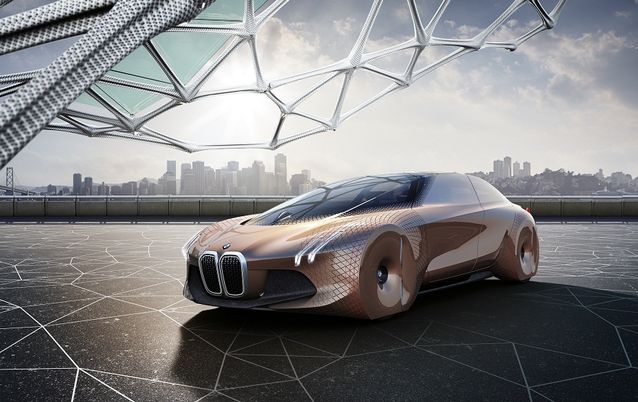
The Vision Next concept showcases some of the technology BMW expects to use in the next 20-30 years. Picture: BMW AG
-
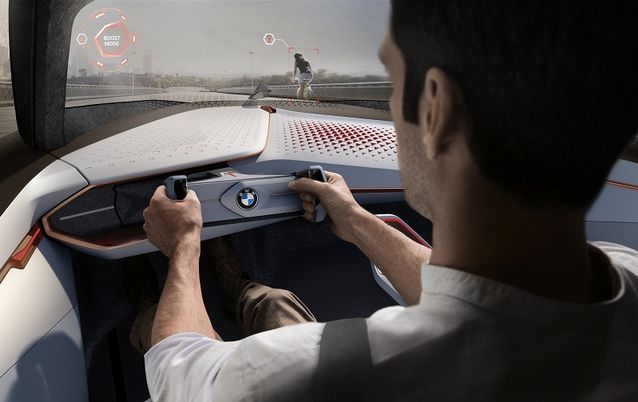
The steering wheel disappears into the dash during autonomous driving and data is projected onto the windscreen. Picture: BMW AG
-
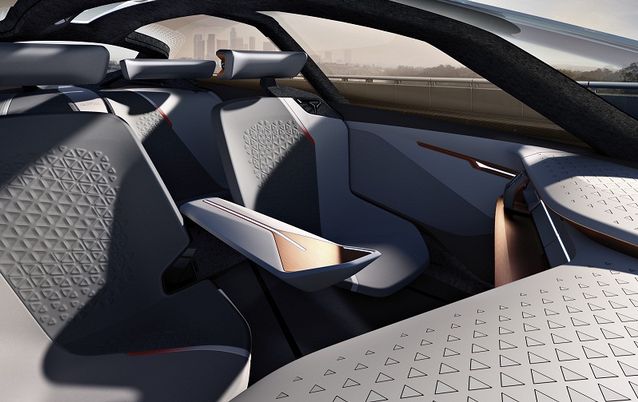
The seats automatically adjust depending on the driving style. Picture: BMW AG
-
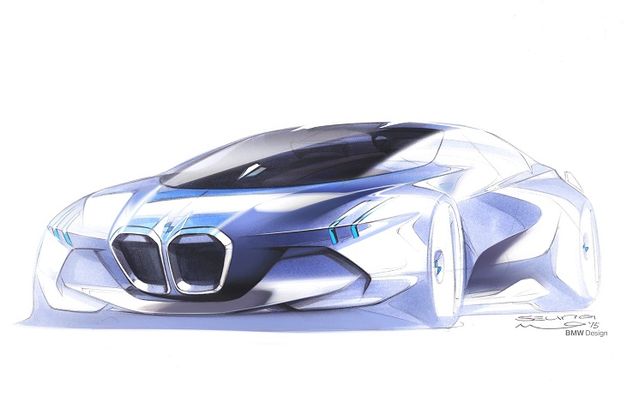
The original design sketches show traditional BMW design elements. Picture: BMW AG
-
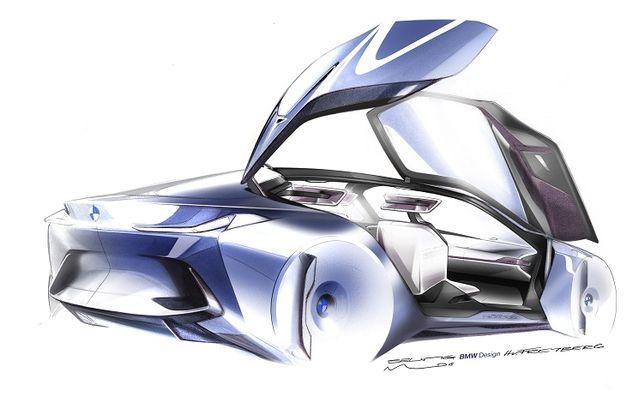
The dramatic doors remain on the concept. Picture: BMW AG
BMW has drawn visual inspiration from the i8 eco sportscar to create a four-door sports sedan concept for its 100th birthday.
The sleek, stunning, monocoloured coupe combines a body the size of a 5-Series sedan with the interior space of a four-seat 7-Series limousine. It’s 4,900mm long and 1,370mm high, making it 10mm shorter and 100mm lower than the outgoing sixth-generation 5-Series.
While BMW has been vague on the details surrounding the Vision Next 100, the concept car does away with many of the brand’s design hallmarks and tries to adopt new ones.
The concept combines whisper-slick aerodynamics, a combination of autonomous and manually controlled driving and the brand’s future connectivity and digital ideas in what it calls a roadmap to the future.
While the car itself is not set for production — at least not for the next 30 years or so — the ideas from it will find their way into production from the next generation of BMW models.
BMW Group CEO Harald Krüger insists the car is a statement of the company’s attitude, showing where his electrical engineers think the brand will need to go to retain its future relevance.
It finally divorces BMW from its traditional face of four round headlights, but it couldn’t take the final step and remove things like the Hofmeister kink for the C-pillar, the L-shaped tail lights or the kidney grille. The grille won’t see service as an air intake anymore, though, because it will be home to the mass of sensors the car will need.
It’s the company’s statement of future development, including autonomous driving, assisted driving aided by Playstation-style ideal lines projected on to the windscreen and seats that can change their shape and style depending on the driving conditions. It will be intimately connected with not only the driver’s smartphone technology, but the driver, too.
"We are always able to reinvent ourselves to create the future," Krüger says.
"We have developed a clear picture. Mobility is becoming more diverse. Being connected is increasingly taken for granted. Our technologies will develop to learn from people.
"Our car will soon be our digital chauffeur and personal companion, it will enrich our lives with personal services. This is how we see mobility in 2030 plus," he says.
The key to the car is said to be its "Alive Geometry" system that manages how and when it interacts with the driver.
It splits that into two modes — "Boost" when the driver takes control and "Ease" for when the car takes over the driving operations.
In Boost mode, the car focuses on helping the driver by indicating the ideal driving line, tweaking the steering to suit the cornering styles and tweaking the suspension tune.
"At BMW, we have always talked about the driving machine. All these technologies are always at the service of the driving experience," BMW Group design boss Adrian van Hooydonk says.
"We want to take this one step further and turn each driver into a better driver. We assume that man and machine will cooperate more, and meld together. We will give the driver an intelligent co-pilot, which we call the Companion.
"It is in constant contact with the outside world and will send only the necessary bits of information to the driver when it’s important.
"There is a steering wheel, but it’s a very clean design. We imagine the whole windshield as a display, with an augmented reality," Van Hooydonk says.
To call it a steering wheel is akin to calling a set of handlebars on a bike a steering wheel.
Instead, it’s a single flat plane with handles at either end and will in no way roll, wheel like, if pushed down a hill.
It also retracts into the dashboard when the car is running in its autonomous mode, when the Companion lights up and the car can even use the windscreen as a full display screen for things such as movies or conference calls.
"The digital world is strongly linked to displays; the next step will be organic LEDs — displays that can freely change shape. At some point, however, there will be no more displays at all. Instead, the entire windscreen will act as a giant display," Van Hooydonk says.
"We dealt with how the pedestrian can see that the car is driving autonomously, showing the light in white at the front of the screen, then it shows up green to tell the pedestrian he or she has been recognised," he says.
For all the talk of the future, though, BMW has forgotten a key part of its past. For the company founded on March 7 1916 as the Bayerische Motoren Werke, there was absolutely no talk of the powertrain of the Vision Next 100.
"We actually didn’t say anything about the engine. You can be assured that it should be emission-free," Van Hooydonk says.
The machine is more about style and technologies, both current and imagined, than it is about powertrain, apparently, and it’s got an abundance of that.
Not only are the front doors long and scissored, lifting up from the hinges on the A-pillar, but the rear doors scissor from the rear, creating a high-rise version of opposite-opening suicide doors.
The wheels can’t be seen, tucked away inside permanent, flexible aero spats at both ends, with grooves carved in them to allow the wheels to turn.
"We have only used a restricted numbers of lines in the side view," says Van Hooydonk.
As for when the car would see production, Van Hooydonk and his boss were far more circumspect.
"If you can imagine something then you’ve taken the first step to making something.
"We are looking into the next 20 or 30 years, though some elements might come in sooner," Van Hooydonk suggests.
"We can’t claim to know what will happen in the next 100 years. Nobody here can check to see if I’m right anyway, but to sit here and say that I know what the end of the next century will bring will be difficult," he says.
"We want to shape the future, not wait for it to arrive, so it’s more of an attitude statement than a statement of fact."
• Log on to www.bdlive.co.za to see video footage of the Vision Next 100 concept car.








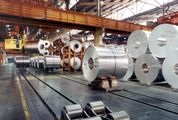

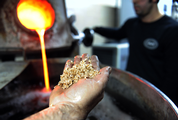















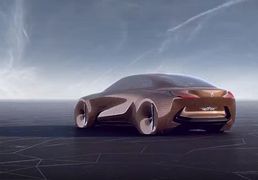

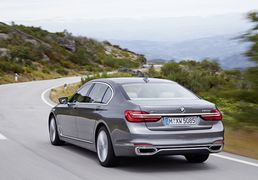
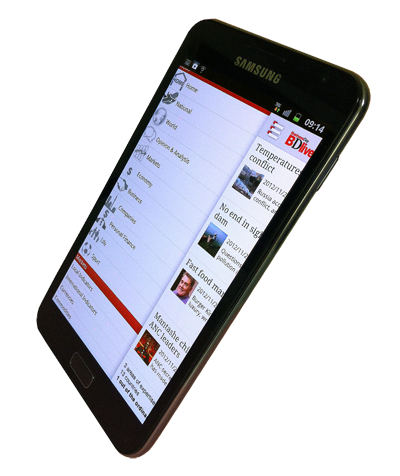




Change: 1.19%
Change: 1.36%
Change: 2.19%
Change: 1.49%
Change: -0.77%
Data supplied by Profile Data
Change: -0.19%
Change: 0.69%
Change: 1.19%
Change: 0.00%
Change: 0.44%
Data supplied by Profile Data
Change: 0.62%
Change: 0.61%
Change: 0.23%
Change: 0.52%
Change: 0.12%
Data supplied by Profile Data
Change: -0.21%
Change: -1.22%
Change: -0.69%
Change: -0.51%
Change: 0.07%
Data supplied by Profile Data